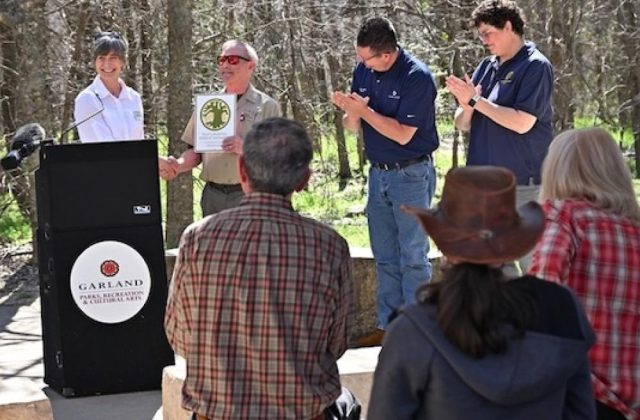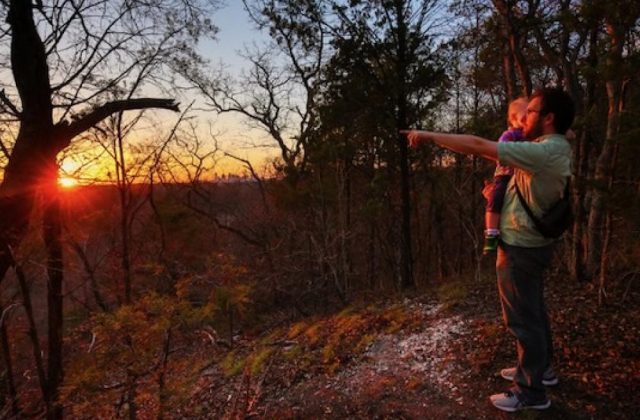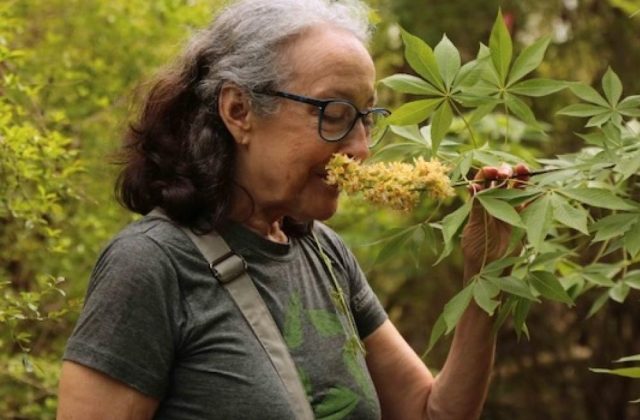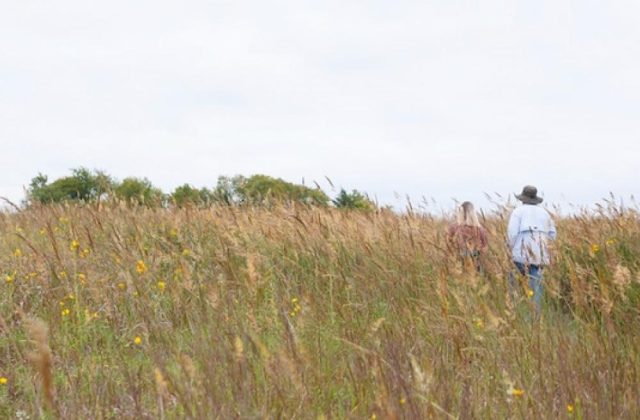Nature lovers outraged over clearcutting in Garland old growth forest
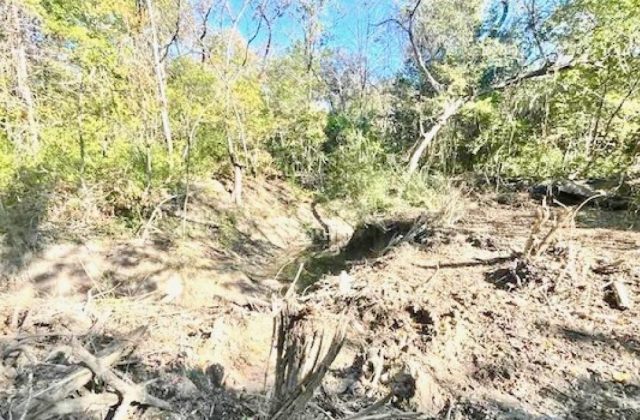
Toppled trees and churned dirt from pipeline work at the Fred E. Harris Greenbelt. Photo by Bill Hitch.
Original post at: https://greensourcedfw.org/articles/nature-lovers-outraged-over-clearcutting-garland-old-growth-forest
July 18, 2025
Bill Hitch couldn’t believe it when he saw it.
Nearly every day, he walked the narrow intimate trail of Fred E. Harris Greenbelt through the lush riparian bottomland across from Spring Creek Forest Preserve. Now there was a long linear bulldozed gash in the woods — trees toppled, green intimacy obliterated.
In mid-June, city of Garland water utilities workers bulldozed miles of a preserve and greenbelt, including a rare old-growth forest, leaving a much wider corridor of destruction than anticipated.
“I know of a red-shouldered hawk nest with a youngster almost ready to fledge that lost its home in this fiasco,” decried Hitch. “Multiple raptors and wood ducks nested there along with the usual mix of mammals.”
The greenbelt has been little known beyond Garland nature lovers. Now a significant portion of it has been demolished, the wildlife Hitch chronicled sent scrambling for their lives.
“I thought surely they were done after digging a huge pipeline through it decades ago. I would have at least appreciated knowing my final trek through my favorite place was the last time I’d ever see it,” Hitch reflected ruefully.

OLD GROWTH FOREST IMPERILED
The damage continued at Spring Creek Forest Preserve. Hikers sounded the alarm in late June. Miles of the easternmost part of the preserve, the wild section from Halff Park to North Garland Avenue, had been brutally cleared for sewer line replacement.
“We do know a work crew thought they had the authority to cut a 12-foot-wide road from one end to the other. And they did,” said a statement from the Preservation Society for Spring Creek Forest.
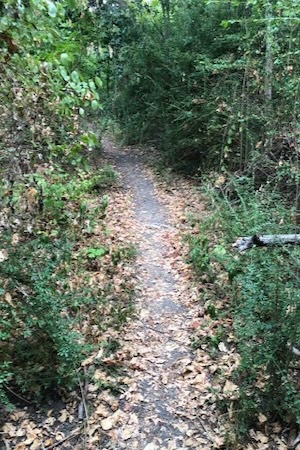
But it was so much more than a simple road clearing. According to long-time Preservation Society volunteer Nancy Amato Boeding, “My step counter registered over two miles. We measured several sections of the road as 18 to 25 feet wide, with some areas almost 50 feet wide.”
“The debris is piled up all along the road, blocking access to our trails. It’s so obvious that no thought for the future of the forest was put into this action.”
Heartbreaking! This was the wild section with narrow footpaths described in the Spring Creek Forest Preserve chapter of my book Wild DFW: Explore the Amazing Nature Around Dallas-Fort Worth.
The area features a unique mix of huge hardwoods that Ned Fritz and the Nature Conservancy scientists extolled as extremely remarkable when pressing for its preservation decades ago.

The wooded bottomland is so exceptional that it was inducted into the Old-Growth Forest Network in 2024, making it only the second forest in the state to gain this special designation. City officials attended and spoke at the inauguration.
The city of Garland claimed in a press release that the bulldozer operators “were unaware they were in the preserve.” But does any land deserve this rampant destruction with nary a thought to its health and future? Had this pipeline replacement occurred in an area with houses and businesses, would it have been done with far more care?
David Parrish of the hard-working Preservation Society for Spring Creek Forest states: “Everyone who loves these natural areas is dealing with the full range of emotions. The city is hiring a forest restoration contractor to work on restoration efforts. We cannot undo the damage but can get the area back on its way to recovery for our great-great grandkids.”

Great-great grandkids. That’s how long it will take to restore the forest to what it was before.
“I don’t understand why when we destroy something created by humans we call it vandalism, but when we destroy something by nature we call it progress.” ~ Ed Begley Jr.
TROUBLE AHEAD
The Fred E. Harris Greenbelt and Halff Park sections of the preserve are riparian bottomlands flanking Spring Creek, a large tributary of Rowlett Creek. The areas are inundated with floodwaters regularly when the creek jumps its banks, sometimes with water rushing at incredible velocity. Getting restoration to stick will take tremendous effort and constant oversight for many years ahead.
Douglas Athas, a preserve supporter, concurs: “Recovery for our great-great grandkids. That’s the truth and the rub. Mitigation won’t restore the damage for generations. The preserve is a unique old-growth forest that has survived countless invasions but none like this. The damage is over 40 feet wide in places. Gullies were filled in to make them easier to cross.”
A filled-in gully is always a disaster in the making. Water goes where it flows. All that fill will ultimately end up in Spring Creek. Excess silt in waterways clouds the water, lowering oxygen levels so aquatic life can’t survive. At times, the bulldozers bladed to bare ground up to the creek edge — an erosion nightmare. Both will soon dump kilos of silt into sparkling Spring Creek. Fish and amphibian kills will result from this.

The city of Garland press release, published well after the damage was brought to light, soft pedals the impact: “Garland’s Parks and Recreation Department is now partnering with the Preservation Society for Spring Creek Forest, along with landscape professionals, architects, and more, to mitigate potential ecosystem disruptions and the loss of trees or other growth, as well as to replace the nature trail which was widened.
“Only a few short sections were part of our existing trails,” stated Boeding. “They were not just widened but obliterated.”
Continued the Garland press release: “The City’s goal is to hopefully restore the Preserve as close as possible to its previous condition. And while restoration efforts are beginning now, please know that completion will take time.”
“A nation that destroys its soils destroys itself. Forests are the lungs of our land, purifying the air and giving fresh strength to our people.” ~ Franklin D. Roosevelt
THE FOREST CONTINUES
It should be stressed that the two most popular sections of Spring Creek Forest Preserve flanking Holford Road, also covered in Wild DFW, have sustained no damage. The northern section at 1787 Holford contains a significant Blackland Prairie remnant and an interpretive hiking trail. Across the street at 1770 Holford is known for its trout lilies and majestic trees. It was also inducted into the Old-Growth Forest Network.

But these sections will be inflicted with damage and indignities in the near future. Holford is slated to be widened, and the bridge over Spring Creek will be completely redone. A gigantic sports development is in the works at Holford and President George Bush Turnpike, which will radically increase Holford traffic. If the work is done with similar disregard, it will be disastrous.
The Holford work is necessary — there has been at least one fatality at the creek crossing. And it comes with an upside. Plans are to connect the two Holford sections with a pedestrian bridge. A paved trail at 1770 Holford leads to beneath the North Garland Avenue bridge and connects to the soft paths in the Halff Park section — at least, if those trails can be restored — creating a genuine long-distance hiking system.
THE GULF BETWEEN POLICY AND PRACTICE
The city of Garland, while it has its share of environmental mishandlings — a concrete batch plant that pollutes profusely and a battery manufacturing plant now under EPA study that may have led to cancer clusters — its prior intentions with Spring Creek Forest Preserve had been noble.
But as environmental activist and author David Marquis points out, “If the person on the mower or the dozer doesn’t get the memo about taking care of nature, then the policy doesn’t matter. We have been forced to learn this hard lesson again and again. The best intentions in the world go unrealized unless the staff at the grassroots level are properly trained and supervised.”
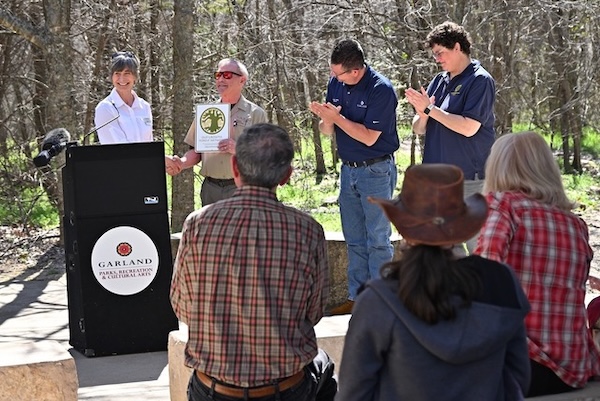
Obviously, the Garland workers were neither trained nor supervised. The context to this disaster is the prevailing ethos among many urban officials and employees that land has no value unless it’s developed or parkified. Those who care about wild nature are considered, inaccurately, to be a tiny slice of the population and routinely disregarded.
But raw land has value in and of itself. It is our natural history. Even for human benefit, green space absorbs rainfall and floodwater, reducing creek erosion and sparing property downstream. The greenery clears pollution from the air and cools the surroundings from the urban heat island effect. In poll after poll, a majority of the population states a desire for more green space.
Yet undeveloped land is treated with callous disregard, with water utilities leading the pack. The Great Trinity Forest is laced with water and sewage lines. Dallas Water Utilities must eventually do something about the large percent it loses through leaky pipes in the forest by replacing them. With its history of environmental insensitivity — McCommas Bluff destruction being a prime example — those who care, shudder at the thought. The ghastly limestone slash that separates Lacywood Overlook from trails to the Scyene Overlook is but a glimpse of the Great Trinity Forest’s future.
“Sooner or later, we will have to recognize that the Earth has rights, too, to live without pollution. What mankind must know is that human beings cannot live without Mother Earth, but the planet can live without humans.” ~ Evo Morales
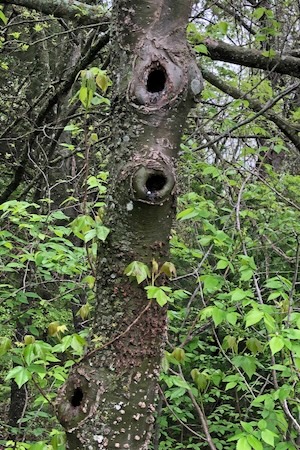
.
PUBLIC COMMENT INVITED
Damage to Spring Creek Forest Preserve and the Fred E. Harris Greenbelt is slated to be on the city of Garland Council Work Session agenda. This will occur on Monday, July 21, 2025 from 6 p.m. to 9 p.m. at .Garland City Hall, 200 N. Fifth Street, Garland, RX 75040. The session will be streamed lived on City of Garland Government Access Television. Anyone attending in person may apply to comment for up to three minutes.
Comments may also be sent by email to Garland Mayor Dylan Hedrick mailto:Mayor@GarlandTX.gov and CCd to the city secretary mailto:CitySecretary@GarlandTX.gov. Preservation Society for Spring Creek Forest requests that they also be CCd maito:springcreekforestpreservation@gmail.com.
RELATED ARTICLES
Old-growth forest in Garland joins national network
Garland residents fear cleanup won’t get the lead out
EPA to discuss lead contamination in Garland at online meeting
Garland neighborhood fights new polluting foe
Stay up to date on everything green in North Texas, including the latest news and events! Sign up for the weekly Green Source DFW Newsletter! Follow us on Facebook, X and Instagram. Also check out our new podcast The Texas Green Report, available on your favorite podcast app.
